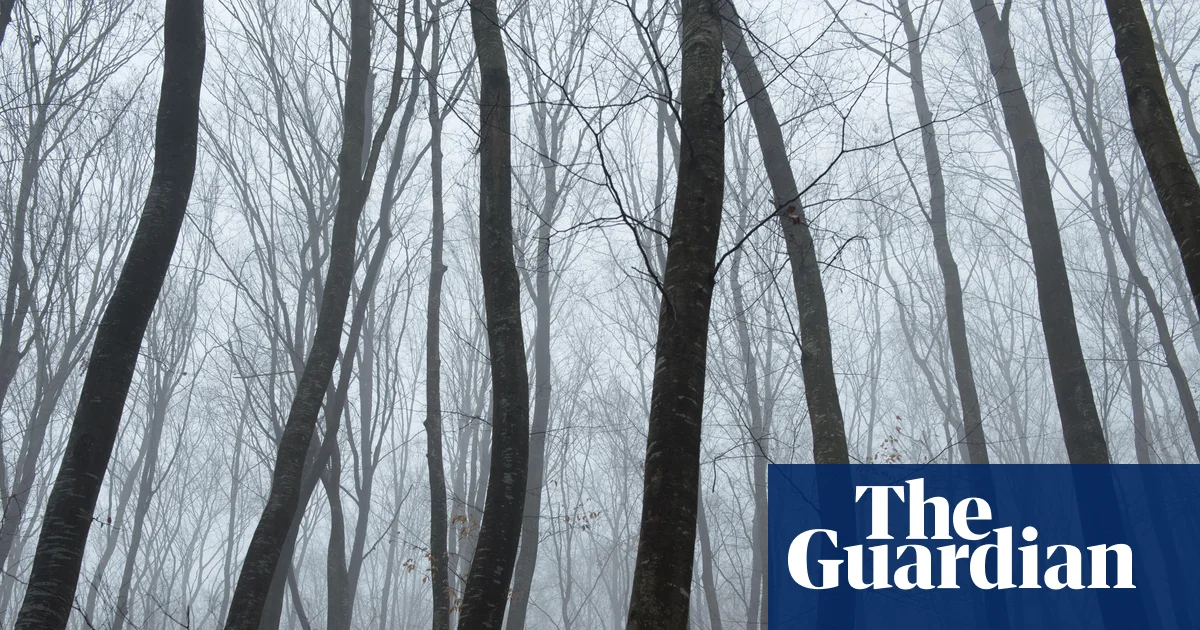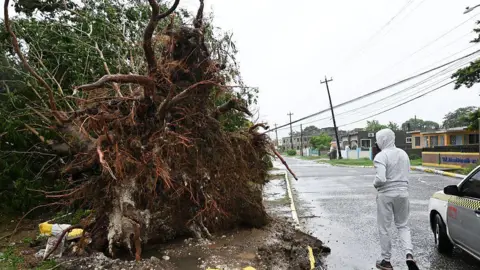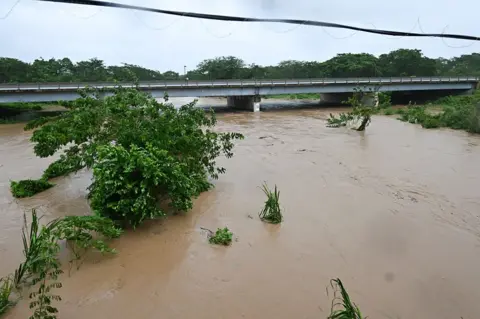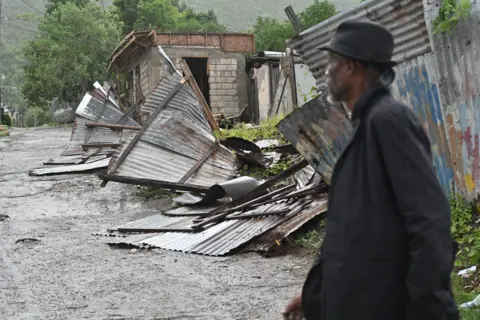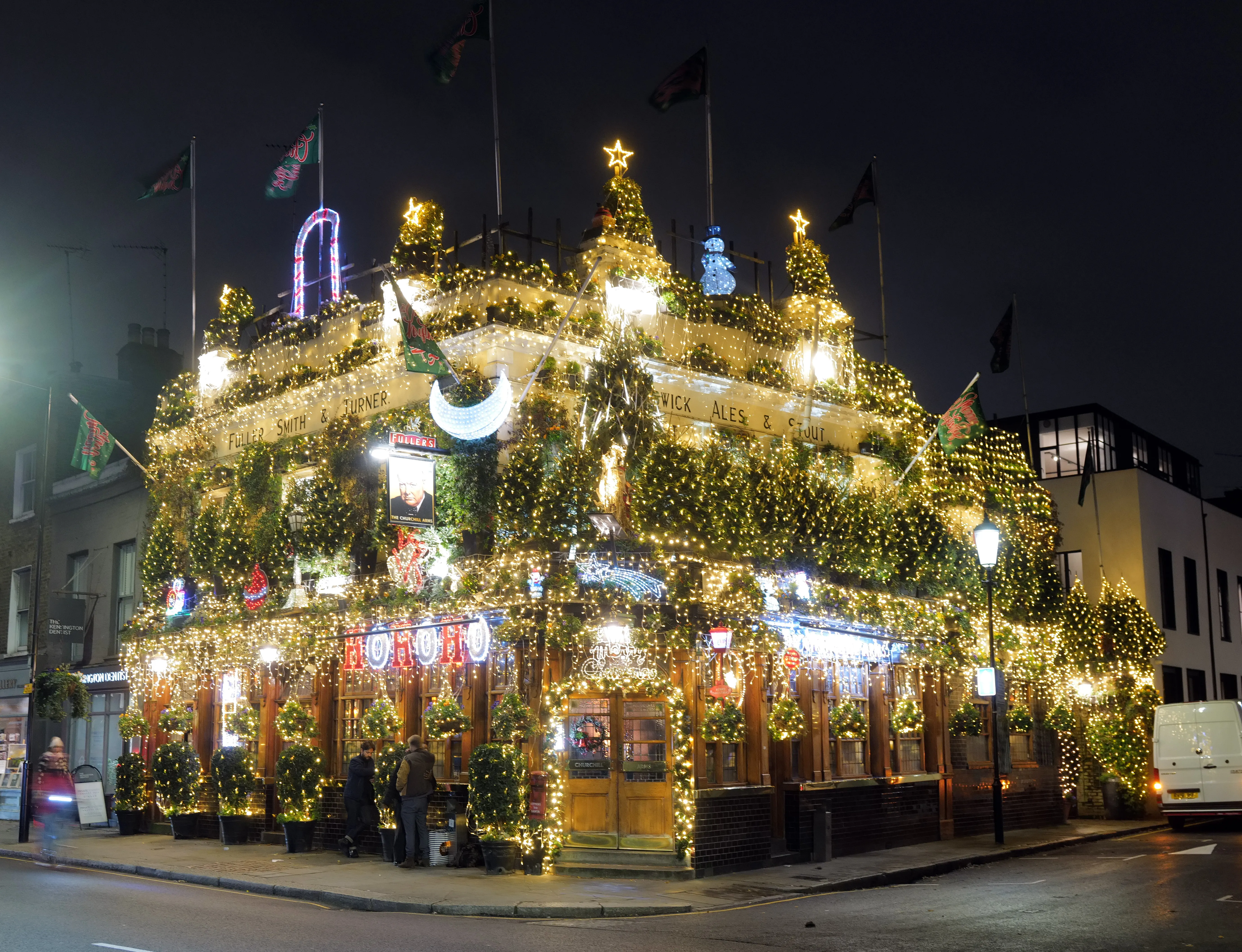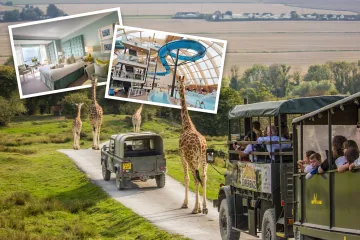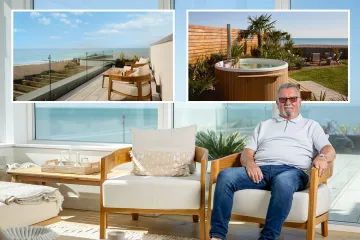‘The world’s most haunted forest’: twisted trees, UFOs and spooky stories in Transylvania | Romania holidays
‘They call this place the Bermuda Triangle of Transylvania,” says tour guide Marius Lazin, his breath expelling a procession of cotton-wool ghosts into the sharp evening air. “So many people have disappeared here, some say it’s a portal to another dimension.” Marius is leading me on a night walk through what is often described as the world’s most haunted forest: Hoia-Baciu, a square mile of old-growth native woodland on the outskirts of the Romanian city of Cluj-Napoca. He’s been coming here three nights a week for the past 12 years, but even he looks a little uneasy as he arcs his torch like a searchlight against the knotted walls of elm and beech trees which embrace us on all sides, looking so thick that they might be the boundary of the known world.
Marius motions with his torch towards several pairs of slender beech trees, eerie in their symmetry, branches intertwined to form arches – portals or stargates, you might speculate, were you possessed of a particularly febrile imagination. “Many came in here and never came out. But don’t worry,” he adds, turning to me with a grin. “Our tours have a 100% return rate.”
Reports of strange happenings here date back centuries – the forest is named after a local shepherd who is said to have vanished in the distant past, along with 200 of his sheep. But Hoia-Baciu came to international attention in 1968, when a military technician named Emil Barnea photographed what he described as a UFO hovering above a circular clearing in the centre of the forest. In the decades since, Hoia-Baciu has drawn yogis, shamans, ufologists and paranormal investigators from across the world, curious to experience the strange energies said to echo through the forest.
It may be one of the world’s premier pilgrimage sites for lovers of the paranormal, but the forest is under threat. The western suburbs of Cluj-Napoca – a modern tech hub of more than 400,000 people, described as the Silicon Valley of eastern Europe – are encroaching, and developers are pushing for permission to clear the trees to build apartment blocks. Barring a few hectares home to locally rare Mediterranean oak trees, the forest is not officially protected, but Marius hopes that the company he co-founded – the Hoia-Baciu Project – will help to change that, encouraging the authorities to recognise the forest’s value as a tourist attraction. The company offers day and night walks in the forest, yoga sessions, paranormal lectures, treasure hunts and escape games – and even, for the particularly intrepid, overnight camping.
As twigs and autumn leaves snap and crunch beneath our boots, Marius recounts some of the folk tales and alleged paranormal happenings here. One famous story describes a five-year-old girl disappearing during a family picnic, only to rematerialise five years later with no memory of what had happened to her, having not aged a day, her clothes shy of the slightest speck of dirt.
More common reports describe mobile phones and camera equipment inexplicably shutting down on entering the woods, while emotional responses range from full-blown dread to states of ecstasy. Some people report seeing strange rashes on their skin, hearing disembodied whispers through the trees, or feel hands grabbing or pushing them, even when sure they are alone.
Marius pulls an iPad from his rucksack and shows me the UFO images which catapulted Hoia-Baciu to international attention in the 1960s. Grainy and monochrome, they appear to show a button-like flying saucer hovering above the trees. He flicks through dozens of other photographs taken in the years before and since, with similar saucer-like objects, glowing orbs or wraith-like apparitions. Enigmatic photographs of this nature have been a fixture of paranormal research for more than a century, not much use as evidence, but it’s worth noting that Barnea did not stand to profit from publishing his photographs – on the contrary, he lost his job in the military, with the communist government not looking kindly on anything with a supernatural tang. “Many of the old researchers who investigated the forest ended up in psychiatric wards,” Marius says. “Did the communist regime put them there? Or did something really happen to them, here in the forest?”
While many of the stories may be unverifiable, there is much before my eyes that is undeniably strange. All around are trees whose trunks are bent and twisted into fantastical shapes. Some bulge outwards at the base, their crowns disappearing into the black night, so they resemble giant meat hooks hanging from the heavens. Others droop like melted candles, or are bent in strange, spiralling patterns. Various suggestions have been given to explain the deformed trees: that hurricane winds could have bent the saplings, or naturally high radiation levels in the soil account for their crooked growth. But scientific investigations have turned up no satisfactory evidence.
Marius’s tours allow visitors to take part in a little scientific inquiry of their own. As we approach the clearing in the trees where Barnea took his famous UFO photographs, he hands me an EMF meter, a stalwart of ghost-hunting kits which measures electromagnetic fields. “We’re entering the most active part of the forest,” he says. “See what you can find.”
The trees suddenly stop dead as we emerge into a perfect circle. The only greenery is the short grass beneath our feet; it’s clear that it hasn’t been mown, and appears that this strange clearing is natural, not the work of human hands.
Wielding my EMF meter, I sweep the clearing like a detectorist, briefly excited when the needle begins to tick madly back and forth, only for my vibrating phone to indicate that the electromagnetic disturbance was just an incoming text message. Despite spending several hours in the forest, and being genuinely baffled by the twisted trees and the strange clearing, I haven’t seen anything I’d describe as supernatural. Perhaps the forest is a blank canvas, on to which people project their own fears and desires.
Transylvania generally is a place which stirs the imagination, where the border is blurred between fact and folklore. In rural Romanian communities belief persists in strigoi (“screamers”) – undead, shapeshifting bloodsuckers, who rise from their graves to terrorise local communities.
Bram Stoker’s famous vampire Count Dracula is forever associated with Transylvania, and Bran Castle – a Saxon monolith perched on a rocky outcrop in the Carpathian Mountains around four hours’ drive south of Hoia-Baciu – is keenly marketed as “Dracula’s Castle”. While it bears little resemblance to the shadowy ruin described as Dracula’s dwelling, and there is no evidence that it inspired Stoker, it’s still a major attraction for fans of all things gothic and ghoulish – particularly around Halloween, when the castle hosts costumed parties.
But even myth-shrouded Transylvania – literally, “the place beyond the forest” – feels solid and predictable compared to these eerie woods, which seem to be, for reasons radioactive, atmospheric or simply folkloric, a nexus for human imaginative power. “In Hoia-Baciu,” Marius says, “the line between reality and imagination is very thin.”
Daniel Stables is the author of Fiesta: A Journey Through Festivity (Icon Books, £20). To support the Guardian, order your copy at guardianbookshop.com. Delivery charges may apply. A three-hour evening walking tour in Hoia-Baciu forest from 300 RON/£50. A five-hour night tour costs 500 RON/£85
